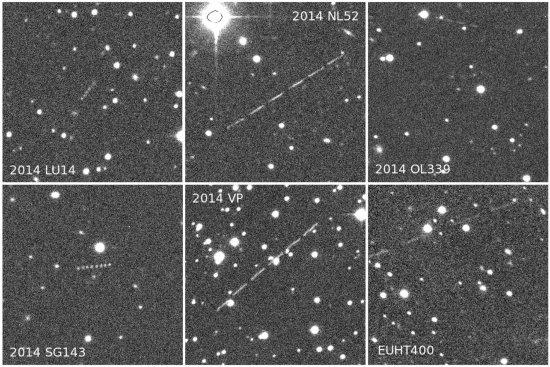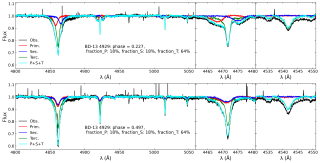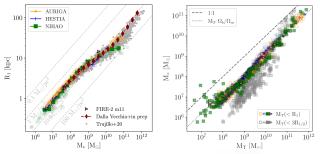Since 2006, the European Near Earth Asteroids Research (EURONEAR)project has been contributing to the research of near-Earth asteroids (NEAs) within a European network. One of the main aims is the amelioration of the orbits of NEAs, and starting in 2014 February we focus on the recovery of one-opposition NEAs using the Isaac Newton Telescope (INT) in La Palma in override mode. As a part of this NEA recovery project, since 2014 June EURONEAR serendipitously started to discover and secure the first NEAs from La Palma using the INT, and thanks to the teamwork including amateurs and students who promptly reduce the data, to report discoveries and secure new objects recovered with the INT and few other telescopes from the EURONEAR network. Five NEAs were discovered with the INT, including 2014 LU14, 2014 NL52 (one very fast rotator), 2014 OL339 (the fourth known Earth quasi-satellite), 2014 SG143 (a quite large NEA), and 2014 VP. Another very fast moving NEA was discovered but was unfortunately lost due to lack of follow-up time. Additionally, another 14 NEA candidates were identified based on two models, all being rapidly followed-up using the INT and another 11 telescopes within the EURONEAR network. They include one object discovered by Pan-STARRS, two Mars crossers, two Hungarias, one Jupiter trojan, and other few inner main belt asteroids (MBAs). Using the INT and Sierra Nevada 1.5 m for photometry, then the 10.4m Gran Telescopio Canarias (GTC) for spectroscopy, we derived the very rapid rotation of 2014 NL52, its albedo, magnitude, size, and its spectral class. Based on the total sky coverage in dark conditions, we evaluate the actual survey discovery rate using 2-m class telescopes. One NEA is possible to be discovered randomly within minimum 2.8 deg2 and maximum 5.5 deg2. These findings update our past statistics, being based on double sky coverage and taking into account the recent increase in discovery.
Figure caption: NEA discovery stack images. The field of view (FOV) is 2 arcmin x 2 arcmin in normal sky orientation. 2014 OL339 could be barely seen in the upper side, while for EUHT400 we include only the last four of the available six images.
Advertised on
References



